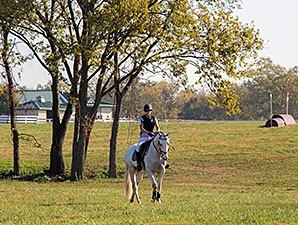Aftercare: The Challenges of Tracking Horses


The challenges of tracking retired racehorses were evident in the results of research discussed Aug. 30 during a New York State Gaming Commission aftercare summit in Saratoga Springs, N.Y.
The summit, designed to provide updates on current efforts and solicit ideas on raising awareness—and more funding—for aftercare, followed one held last year in New York. One of the projects started last year was an attempt to confirm the status of horses after their last races at New York's four Thoroughbred tracks.
"Last year we provided an update on what the numbers are and what the needs are," said Jack Knowlton, operating manager of Sackatoga Stable and a member of the New York State Task Force on Retired Racehorses. "I'm still frustrated we're not able to get where we want to get."
With assistance from The Jockey Club, the task force identified more than 3,800 New York Thoroughbreds that raced in the state from 2010-12 but never raced again. Of the total, 1,325 last raced at Finger Lakes Gaming & Racetrack, 434 at Aqueduct Racetrack, 387 at Belmont Park, and 126 at Saratoga Race Course. About 20% ran their last races at tracks outside of New York.
Thus far, Knowlton said 1,082—a little more than 27% of the total—have known status. Of that group 54% are broodmares, 29% are deceased, and almost 15% fall into the categories of retired or adopted. Of the more than 2,800 whose status remains unknown, they raced for about 900 trainers; some had one-horse stables while one had more than 90 horses in training, Knowlton said.
Of the horses accounted for, 58% were in New York and 42% out of state
"Obviously there are a lot of challenges in finding out where (the horses) went," Knowlton said. "This gives you a flavor of the breadth of where these horses are. We're looking for ideas on how, on an ongoing basis, to track horses as they leave the racetrack so we can really understand where they are going."
It was noted during the summit that beginning in 2017 microchips will be mandatory for any Thoroughbred registered with The Jockey Club; the program is voluntary this year but requests for microchips were made for about three-quarters of registrations. For aftercare purposes, the chips will aid in identifying horses when they are found but can't take the place of responsible horse ownership as noted during the meeting.
Tom Gallo III, president of the New York Thoroughbred Breeders, a farm owner, and managing of owner of Parting Glass Racing, said viewing a NYSGC video on aftercare should be mandatory not only for trainers but for owners.
"We are in a modern era, and a lot of people have a need for immediate gratification," Gallo said. "A lot of owners (today) aren't in it for the love of the horse. When I talk (to people interested in partnerships) I tell them, 'You don't own a horse until its last race. You own a horse until it is properly placed in an accredited (aftercare program)."
